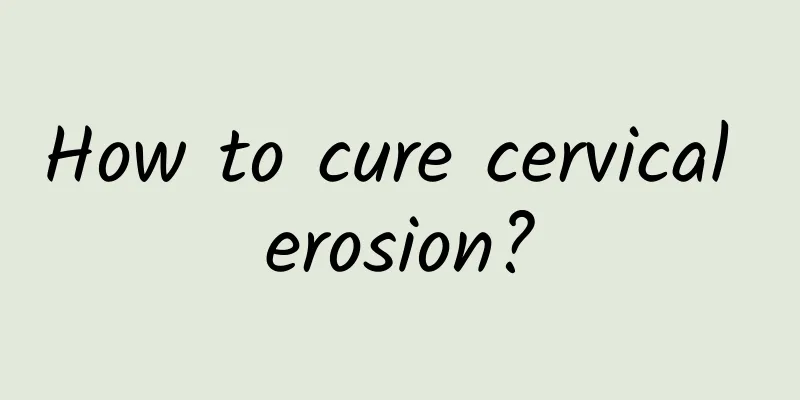What are submucosal uterine fibroids? What are the symptoms of submucosal uterine fibroids?

|
In recent years, uterine fibroids are a common gynecological disease, and the number of patients has continued to increase. There are many types of this disease, and submucosal uterine fibroids is one of them. So, what is submucosal uterine fibroids? What are the symptoms of this disease? Submucosal uterine fibroids are close to uterine fibroids and grow toward the uterus. The surface is covered with endometrium, which is called submucosal fibroids. They protrude from the uterine cavity and can change the shape of the uterine cavity. Some fibroids are only connected to the uterine wall. If a foreign body causes reflex uterine contraction, due to gravity contraction, the fibroids gradually move toward the cervical opening due to gravity, and eventually the pedicle is elongated, and the fibroids are gradually squeezed outside the cervix or vaginal opening. In addition, this type of fibroids accounts for about 10% of the total. Because the fibroids are located in the uterine cavity, the uterus mostly grows uniformly. Due to the traction of the fibroids and insufficient blood supply to the fibroid pedicles, the uterus may have mild inversion and bleeding, necrosis, and infection of the endometrium on the surface of the fibroids, causing irregular vaginal bleeding and increased secretions. Uterine fibroids are often multiple, and two or even three of the above fibroids can occur simultaneously in the same uterus, which is called multiple uterine fibroids. The symptoms of submucosal uterine fibroids need to be grasped in advance. According to the different locations of uterine fibroids, uterine fibroids can be divided into different types, such as submucosal uterine fibroids, subserosal fibroids, intramural fibroids, etc. So, what are the symptoms of submucosal uterine fibroids? Submucous uterine fibroids symptoms: 1. Menstrual changes: The early symptoms of submucosal uterine fibroids may manifest as irregular vaginal bleeding in patients, specifically shortened menstrual cycles, increased menstrual volume, prolonged menstruation, and irregular vaginal bleeding in some patients. If the patient has excessive menstruation for a long time, it will lead to secondary anemia. 2. Increased vaginal discharge: In most cases, submucosal fibroids can cause abnormal vaginal discharge, increased vaginal discharge, etc. Sometimes a large amount of pus and necrotic tissue will be discharged, accompanied by an unpleasant odor. 3. When the submucosal fibroids are large, they will compress the surrounding tissues and organs, causing the patient to experience a series of compression symptoms, such as compressing the bladder, which will cause frequent urination and painful urination; compressing the rectum, which will cause the patient to have difficulty defecating. The above are common symptoms of submucosal uterine fibroids. When the above symptoms occur, the patient must go to a regular gynecological hospital for examination in time. When uterine fibroids are diagnosed, they should be treated in time. It is recommended that patients choose appropriate uterine fibroid treatment methods to achieve the effect of eliminating uterine fibroids. |
<<: What causes uterine fibroids? How to prevent uterine fibroids?
>>: What does uterine fibroids mean? What is the age of onset of uterine fibroids?
Recommend
How to treat chronic cervicitis with squamous epithelial hyperplasia? 3 methods are the most effective in treating chronic cervicitis
Some diseases are chronic, and some are short-ter...
What are the causes of adnexitis?
What are the causes of adnexitis? Adnexitis is a ...
Medical treatments for uterine effusion include
The best treatment for hydrometra is antibiotics,...
Eating endless barbecue during Mid-Autumn Festival? Cardiovascular alarm! 10 Foods to Suppress Your Appetite
The Mid-Autumn Festival is approaching, and the s...
Experts tell you the clinical manifestations of cervical hypertrophy
Cervical hypertrophy is a gynecological disease t...
What are the dangers of hyperprolactinemia?
Hyperprolactinemia must be treated early to avoid...
How to care after abortion?
Pay attention to rest and strengthen nutritional ...
Contraindications for bacterial vaginosis
There are many misunderstandings in the treatment...
Do you often feel uncomfortable or sprained in your feet when running? Runners must know! 5 common injuries and how to avoid them
Road running has become a part of modern people&#...
What causes uterine cysts?
The causes of uterine cysts include genetics, env...
What are the reactions of right ovarian cyst
What are the reactions of right ovarian cyst? Rig...
3 minutes in 1 day! Squats have these 3 benefits, private squat weight loss method to let you know
Every girl has been fighting against "weight...
What diseases are women prone to after menopause?
Menopause is an inevitable process in every woman...
Excessive intake of ultra-processed foods may cause obesity, cancer, and cognitive decline! What are ultra-processed foods?
Ultra-processed foods (UPF) are foods that have g...
Can I have an IUD if I have pelvic effusion?
IUD is a contraceptive measure for women who do n...









